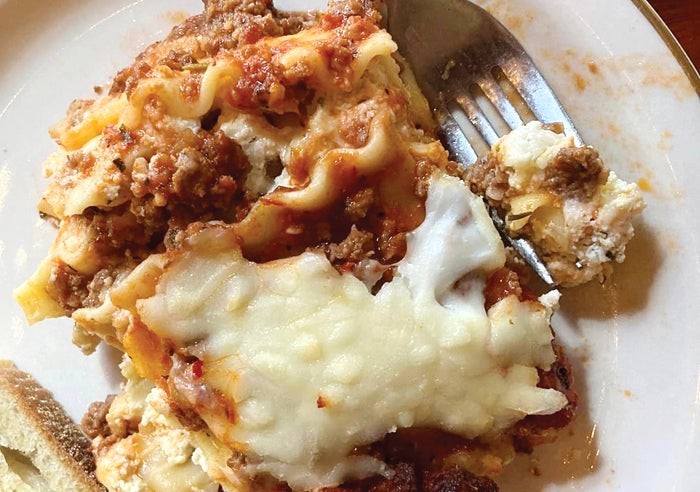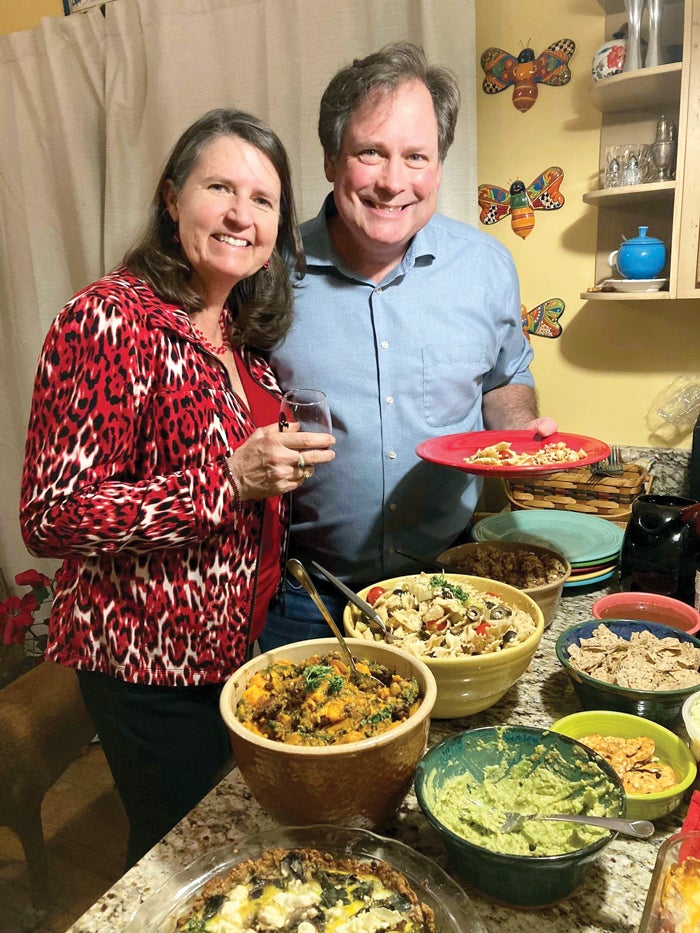Raclette: Fondue minus cliches and ’70s flashbacks
Published 12:00 am Tuesday, December 18, 2012
When Cowgirl Creamery breaks out the raclette on weekends in San Francisco’s Ferry Building Marketplace, people float into the store almost trancelike.
“They smell that aroma coming down the hall in the ferry building and they’re drawn to it like a cartoon,” Sue Conley, co-founder of the San Francisco-based cheese company, says of raclette — the name of a cheese, as well as a dish and the machine used to make it.
Which is surprisingly unhelpful. What is raclette? Consider it a more sophisticated answer to fondue.
Raclette — which derives from the French word meaning “to scrape” — involves melting the surface of a wheel of semi-soft raclette cheese, then scraping the gooey part onto boiled potatoes and other accompaniments. A tradition of the Swiss Alps, raclette is still little known in the United States. But that may be changing.
The pungent, washed rind cheese has been made in Switzerland for centuries in the canton of Valais. Its most distinctive feature is that it becomes creamy and smooth when melted. The Swiss eat it as a meal, accompanied by boiled potatoes, cornichons and pearl onions, with liberal drafts of white wine or tea. Raclette also makes great street food, served on a slab of bread.
In the United States, it’s hard to find outside high-end cheese shops, supermarkets such as Whole Foods Market and the occasional very, very cool party. Shops like Cowgirl Creamery sell and serve raclette. Murray’s Cheese in New York also is experimenting with it.
Raclette should naturally appeal to palates weaned on grilled cheese. But a number of obstacles have slowed its rise. Raclette traditionally has been imported, which can make it both expensive and hard to find. While most raclette still is imported, a number of American cheese makers have begun producing it.
Emmi Roth USA, the American arm of a large Swiss cheese maker, has been making small amounts of raclette for about 20 years. Leelanau Cheese Company in Michigan began crafting handmade raclette in 1995. And last winter, Spring Brook Farm in Vermont also began offering raclette. While that means there is more of it is available, getting the word out is another story.
“Even the imported Swiss and French raclette aren’t really marketed and there are only a few producers in the U.S. making it,” says Nora Weiser, executive director of the American Cheese Society, based in Denver, Colo. “It’s a matter of awareness in many cases. If awareness is raised and more people try it, I think people will get into it.”
Which may already be happening. It’s no longer hard to find a raclette machine. A trip to the mall and retailers like Williams-Sonoma will do. They also are readily available online. Boska, a Dutch company that sells raclette machines, says U.S. sales of professional setups have doubled since last year. Home models have grown as much as 30 percent.
But raclette aficionados say even equipment shouldn’t stand in your way.
“You don’t need a fancy oven,” says Rene Weber, master cheese maker and vice president of operations for Emmi Roth USA. “You can just cut a quarter-inch slice, put it in a Teflon pan, and heat it up and when it melts you put it on a plate. That’s how the Swiss eat it at home.”
Leelanau still makes just 30,000 pounds of their handmade raclette cheese a year, but that figure is four times what it was when they started 17 years ago. Weber says raclette makes up less than 10 percent of sales for his company, but that the figure is growing.
“Think of the `70s when fondue became all the rage. Raclette is next maybe,” says American Cheese Society’s Weiser. “People are more open to different cheeses. They’re looking for local products and looking for ways to support producers in their region. They’re more open and their palates are more prepared for it.”
Raclette is the perfect party food. Like fondue, it’s all about melting cheese. The biggest difference is that raclette (the name of both the cheese used and the overall dish) is grilled or broiled, rather than cooked in a pot.
Typically, raclette is melted in individual portions using a special raclette grill. The cheese then is scraped onto a person’s plate over a serving of boiled potatoes, pickled onions and gherkins or cornichons (another kind of small pickle). Other accompaniments might include ham or dried beef, along with various vegetables and fresh bread.
Raclette grills usually have two levels — a top for heating vegetables or meat, and a lower broiler level for melting the cheese. Individual pans are used for melting the cheese. Raclette cheese is obviously the most popular cheese to use to for the dish. If you can’t find it, another firm, easy melting Swiss cheese can be substituted, such as Emmentaler.
Start to finish: 1 hour prep
Servings: 8
2 pounds new or fingerling potatoes
Kosher salt
1/2 C. rice or sherry vinegar
2 Tbs. sugar
1 tsp. kosher salt
1/2 tsp. smoked paprika
1/2 tsp. ground black pepper
2 Tbs. chopped fresh thyme
1 C. frozen peeled pearl onions,
thawed
3 red bell peppers,
cored and sliced
1 pound green beans, trimmed
12 ounces small button
mushrooms
4 ounces prosciutto
4 ounces dry salami, sliced
1 pound cooked, peeled shrimp
1/2 C. marinated artichokes
1/2 C. gherkins or cornichons
2 pounds raclette cheese,
sliced
Heat the oven to 200 degrees.
To prepare the potatoes, fill a large pot with the potatoes and enough salted water to cover them by 1 inch. Bring to a boil over medium-high and cook for 15 minutes, or until tender when pierced with a fork. Drain the potatoes, then return them to the pot, cover and place in the oven to keep warm.
While the potatoes are cooking, start the vegetables. In a medium saucepan over medium-high heat, bring the vinegar, sugar, salt, paprika and black pepper to a boil, stirring to dissolve the sugar and salt.
In a large bowl, combine the thyme, onions, red peppers, green beans and mushrooms. Pour the hot vinegar mixture over the vegetables then set aside, stirring occasionally, for 20 minutes.
To serve, follow the product directions for heating and using your raclette grill. Use a slotted spoon to transfer the marinated vegetables to a platter. Arrange the potatoes and other accompaniments in bowls or on plates at the table. Guests can heat their vegetables on the top of the grill and melt their cheese using the grill’s broiler according to product directions. Top potatoes with the vegetables and melted cheese.





